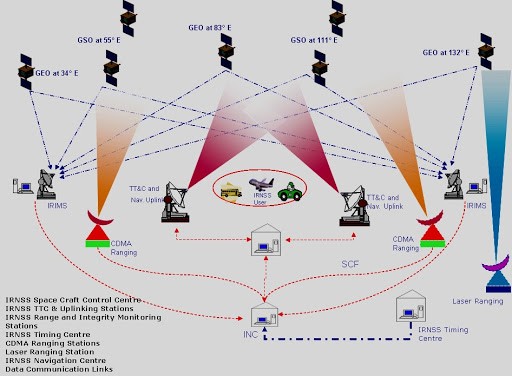Realme recently launched the Realme X50 Pro 5G smartphone in the Indian market. With that, the company has become the first one to launch a 5G compatible phone in India as well as the first to launch a device with support for NavIC — India’s indigenous navigation satellite system.
Here’s everything you need to know about Navigation With Indian Constellation (NavIC).
What is NavIC?
Navigation With Indian Constellation, abbreviated as NavIC, is India’s own navigation satellite system developed by Indian Space Research Organisation (ISRO). It is claimed to provide accurate location positioning to users in India and neighbouring regions.
The technology is powered by eight IRNSS satellites, of which one provides messaging services. All the satellites are configured identically with I-1K Bus to be compatible for launch on-board PSLV.

According to ISRO, three satellites are located in suitable orbital slots in the geostationary orbit while the other four are located in geosynchronous orbits with the required inclination and equatorial crossings in two different planes.
It is designed to offer accurate position information service in India as well as in the region extending up to 1,500 km from India’s boundary.
NavIC will be providing two types of services – Standard Positioning Service (SPS) for all the users and Restricted Service (RS) which is only to the authorised users.
NavIC support for smartphones
NavIC wil be now coming as a feature on mobile chipsets and thus, you will be able to use the feature through your smartphones. However, you won’t be noticing much different as NavIC is a back-end technology and you’ll still be using Google Maps or any other similar app.
Qualcomm has launched new chipsets that come with support for NavIC — Snapdragon 720G, Snapdragon 662, and the Snapdragon 460. These three chipsets come with support for dual-frequency — L1 (1.58 GHz) and L5 (1.17 GHz) — Global Navigation Satellite Systems (GNSS).
NavIC works on L5 band S-band (2.5 GHz). So these chips are designed to automatically support the NavIC standard out-of-the-box.
There has been a controversy related to the support for NavIC on the flagship Qualcomm Snapdragon 865 SoC but the American chipmaker has now clarified that “Snapdragon 865 is NaviC capable with the final software update coming to our OEMs around April 2020.”
Benefits and Applications of NavIC
NavIC is claimed to enable more accurate location performance, and faster time-to-first-fix (TTFF) position acquisition. With seven satellites, it is considered to be at par with US-based GPS, Russia’s Glonass and Galileo developed by Europe.
It will also be offering an improved quality of location-based services. The system is claimed to have a position accuracy better than 20 metres in the primary service area. In comparison, 24-satellite based GPS enabled smartphones can be accurate to within a 4.9 meter radius.
Other applications of the system include:
- Aerial and marine navigation
- Disaster Management
- Tracking vehicles and fleet management for businesses
- Improved Timing
- Improved Mapping and Geodetic data capture
- Terrestrial navigation aid for hikers and travellers
- Visual and voice navigation for drivers
